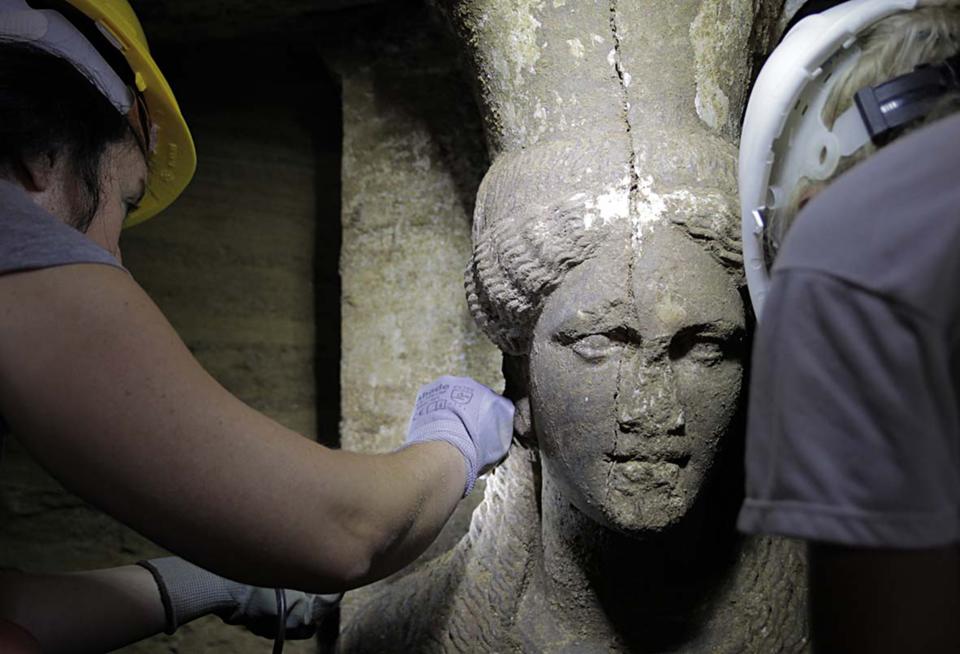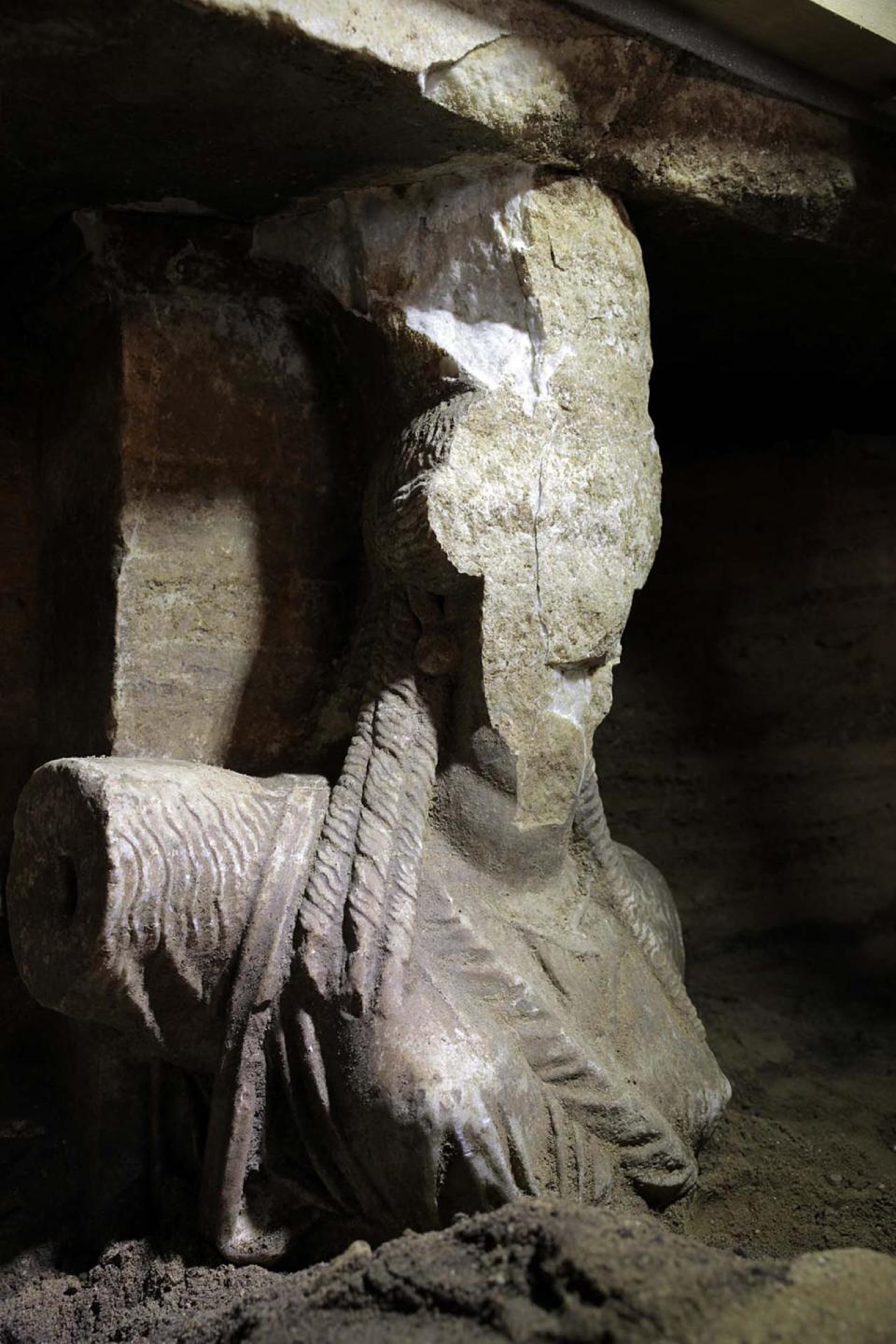Fever mounts as stunning statues found at ancient Greek tombAFP
4 hours ago
 This picture released by the Greek Ministry of Culture on September 7, 2014 shows one of the two statues of a Caryatid inside the Kasta Tumulus in ancient Amphipolis, northern Greece (AFP Photo/)
This picture released by the Greek Ministry of Culture on September 7, 2014 shows one of the two statues of a Caryatid inside the Kasta Tumulus in ancient Amphipolis, northern Greece (AFP Photo/)Athens (AFP) - Two stunning caryatid statues have been unearthed holding up the entrance to the biggest ancient tomb ever found in Greece, archaeologists said.
The two female figures in long-sleeved tunics were found standing guard at the opening to the mysterious Alexander The Great-era tomb near Amphipolis in the Macedonia region of northern Greece.
"The left arm of one and the right arm of the other are raised in a symbolic gesture to refuse entry to the tomb," a statement from the culture ministry said Saturday.
Speculation is mounting that the tomb, which dates from Alexander's lifetime (356-323BC), may be untouched, with its treasures intact.
Previous evacuations of Macedonian tombs have uncovered amazing troves of gold jewellery and sculptures.
A five-metre tall marble lion, currently standing on a nearby roadside, originally topped the 500 metre-long funeral mound, which is ringed by a marble wall.
 This picture released by the Greek Ministry of Culture on September 7, 2014 shows one of the two statues of a Caryatid inside the Kasta Tumulus in ancient Amphipolis, northern Greece (AFP Photo/)
This picture released by the Greek Ministry of Culture on September 7, 2014 shows one of the two statues of a Caryatid inside the Kasta Tumulus in ancient Amphipolis, northern Greece (AFP Photo/)Two headless stone Sphinx statues flanked the outer entrance, officials said, who said that "removing earth from the second entrance wall revealed the excellent marble caryatids".
Photographs released by the ministry show the sculptures -- which hold up a lintel -- uncovered to mid-bust, their curly hair falling onto their shoulders.
 This photo released on Sunday, Sept. 7, 2014 by the Greek Culture Ministry, shows 60cm (2 foot) female figurines on a wall leading to the yet unexplored main room of an ancient tomb, in the town of Amphipolis, northern Greece. The tomb dates between 325 B.C. — two years before the death of ancient Greek warrior-king Alexander the Great — and 300 B.C. Archaeologists excavating a massive burial mound in northern Greece have found two marble sculptures of female figures and a large, colored marble panel in what appears to be the antechamber of the main room. (AP Photo/Culture Ministry)
This photo released on Sunday, Sept. 7, 2014 by the Greek Culture Ministry, shows 60cm (2 foot) female figurines on a wall leading to the yet unexplored main room of an ancient tomb, in the town of Amphipolis, northern Greece. The tomb dates between 325 B.C. — two years before the death of ancient Greek warrior-king Alexander the Great — and 300 B.C. Archaeologists excavating a massive burial mound in northern Greece have found two marble sculptures of female figures and a large, colored marble panel in what appears to be the antechamber of the main room. (AP Photo/Culture Ministry) Archaeologists have been digging at the site, which Greek Prime Minister Antonis Samaras called a "very important find", since mid-August.
The ministry said the lay-out of "the second entrance with the caryatids gives us an important clue that it is a monument of particular importance".
Expectation had already begun to build given the quality of the sculpted column capitals and delicately coloured floor mosaic already discovered at the site.
Theories abound about who could be buried in the tumulus tomb, ranging from Alexander's Bactrian wife Roxane, to his mother Olympias or one of his generals.
Experts say the chances of Alexander himself being buried there are small, however.
After his death at 32 in Babylon, the most celebrated conquerer of the ancient world is believed to have been buried in Alexandria, the Egyptian city he founded -- although no grave has ever been found there.
http://news.yahoo.com/fever-mounts-stunning-statues-found-ancient-greek-tomb-230438392.html